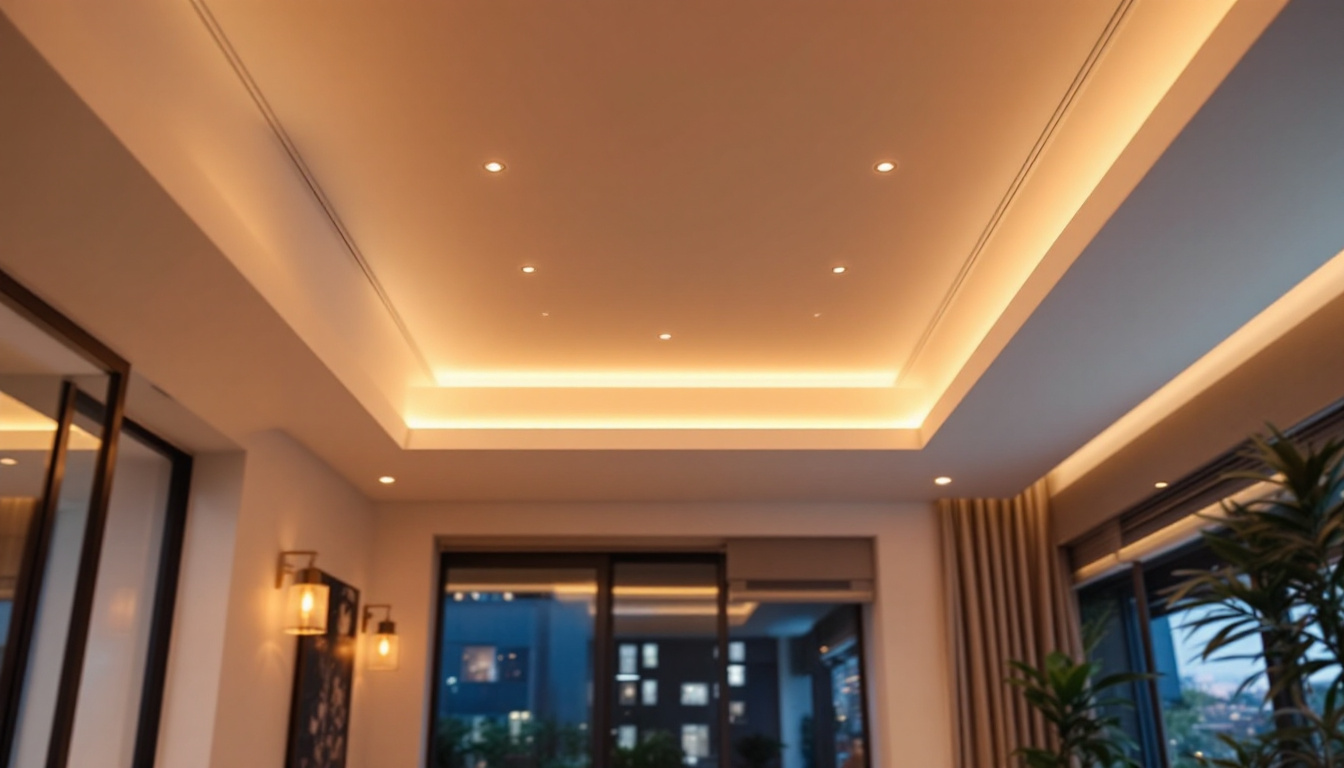
As the demand for efficient and effective outdoor lighting solutions continues to grow, lighting contractors are increasingly turning to LED flood lights. These versatile fixtures not only provide illumination but also enhance the safety and aesthetic appeal of outdoor spaces. This article delves into crucial insights about outdoor LED flood lights, offering valuable information for lighting contractors.
LED (Light Emitting Diode) technology has revolutionized the lighting industry. Unlike traditional incandescent or halogen lights, LEDs are more energy-efficient and have a longer lifespan. This section explores the fundamental aspects of LED technology that every lighting contractor should know.
One of the primary advantages of LED flood lights is their energy efficiency. They consume significantly less power compared to traditional lighting options, which translates to lower electricity bills for clients. This efficiency is particularly beneficial for large outdoor areas that require extensive lighting.
Moreover, the reduced energy consumption contributes to a lower carbon footprint, making LED flood lights an environmentally friendly choice. This aspect can be a selling point for contractors looking to promote sustainable practices in their projects. In fact, many municipalities are now incentivizing the use of LED lighting by offering rebates and tax benefits, further encouraging clients to make the switch. As awareness of environmental issues grows, the demand for energy-efficient solutions like LEDs continues to rise, positioning contractors who specialize in this technology as leaders in the field.
LED flood lights are known for their impressive lifespan, often lasting up to 25,000 hours or more. This longevity means fewer replacements and maintenance calls for contractors, allowing for a more streamlined workflow. Clients appreciate the reduced need for frequent bulb changes, which can be a significant advantage in commercial settings.
Additionally, LEDs are more resistant to shock and vibration, making them ideal for outdoor applications where weather conditions can be unpredictable. This durability ensures that the investment in LED flood lights pays off over time. Furthermore, many LED products are designed with advanced thermal management systems that prevent overheating, thus extending their operational life even further. This resilience not only enhances the performance of the lighting but also instills confidence in clients regarding the reliability of their lighting solutions, fostering long-term relationships between contractors and their customers.
With a variety of LED flood lights available on the market, selecting the right fixture for a specific application can be challenging. Understanding the key factors to consider will help contractors make informed decisions.
Lumen output is a crucial specification that indicates the brightness of the flood light. Contractors should assess the area that requires illumination and determine the appropriate lumen output needed to achieve the desired brightness. For instance, a parking lot may require higher lumens compared to a residential garden.
It is essential to balance brightness with energy efficiency. Selecting a flood light with the right lumen output ensures that clients receive adequate lighting without incurring excessive energy costs. Additionally, it’s beneficial to consider the color temperature of the light, which can range from warm white to cool daylight. Warmer temperatures create a cozy atmosphere, making them suitable for residential areas, while cooler temperatures enhance visibility and alertness, making them ideal for commercial and industrial applications.
The beam angle of an LED flood light affects how light is distributed across a given area. A narrow beam angle is suitable for focused lighting, such as highlighting architectural features, while a wider beam angle is ideal for general illumination in larger spaces.
Contractors should consider the intended use of the flood light when selecting the beam angle. Understanding the spatial dynamics of the area being lit will help in achieving optimal lighting outcomes. For example, in outdoor settings like sports fields or large event venues, a wider beam angle can ensure that light reaches all corners effectively, reducing shadows and enhancing safety. On the other hand, for security applications, a narrow beam may be more effective in directing attention to specific areas, such as entrances or pathways, thereby increasing visibility and deterring potential intruders.
Proper installation is critical for maximizing the performance of LED flood lights. Lighting contractors must be aware of various installation factors to ensure safety and efficiency.
LED flood lights come with various mounting options, including wall mounts, pole mounts, and ground mounts. The choice of mounting option will depend on the specific application and the layout of the outdoor space. For example, wall-mounted fixtures may be suitable for illuminating building facades, while pole-mounted lights are ideal for parking lots and sports fields.
Contractors should also consider the height at which the flood lights are installed. Higher installations can provide broader coverage but may require more powerful fixtures to ensure adequate illumination.
When installing LED flood lights, it is essential to ensure proper wiring and power supply. Contractors should adhere to local electrical codes and regulations to guarantee safety and compliance. Additionally, using the appropriate gauge of wire is crucial to prevent overheating and ensure the longevity of the fixtures.
In some cases, it may be beneficial to incorporate smart technology into the lighting system. This can include features such as motion sensors or timers, which can enhance energy efficiency and provide added convenience for clients.
While LED flood lights are known for their durability, regular maintenance is still necessary to ensure optimal performance. Contractors should be prepared to address common issues that may arise during the lifespan of the fixtures.
Dust, dirt, and debris can accumulate on the surface of LED flood lights, diminishing their brightness and effectiveness. Regular cleaning is essential to maintain optimal performance. Contractors should recommend a cleaning schedule to clients, particularly in areas with heavy pollution or dust.
Additionally, periodic inspections can help identify any potential issues, such as loose connections or damaged fixtures. Early detection of problems can prevent more significant issues down the line and ensure that the lighting system remains reliable.
Even with proper maintenance, issues may occasionally arise with LED flood lights. Common problems include flickering, dimming, or complete failure of the fixture. Contractors should be equipped to troubleshoot these issues effectively.
For flickering lights, it may be necessary to check the power supply and connections. Dimming may indicate a need for a higher wattage fixture, while complete failure could be due to a burned-out LED or faulty wiring. Understanding these common issues will enable contractors to provide efficient solutions for their clients.
While LED flood lights may have a higher upfront cost compared to traditional lighting options, the long-term savings and benefits often outweigh the initial investment. Lighting contractors should be prepared to discuss cost considerations with clients.
The initial cost of LED flood lights can be a barrier for some clients. However, contractors should emphasize the long-term savings associated with energy efficiency and reduced maintenance costs. Over time, the lower energy consumption can lead to significant savings on electricity bills, making LEDs a cost-effective choice.
Moreover, the longevity of LED fixtures means fewer replacements, further contributing to overall cost savings. Contractors can provide clients with a detailed cost analysis to illustrate the financial benefits of investing in LED technology.
Many regions offer incentives or rebates for businesses and homeowners who choose energy-efficient lighting solutions. Contractors should stay informed about available programs that can help clients offset the initial costs of LED flood lights.
By highlighting these incentives, contractors can encourage clients to make the switch to LED technology, ultimately leading to more sustainable lighting solutions.
The outdoor lighting industry is continually evolving, with new trends and technologies emerging regularly. Lighting contractors should stay abreast of these developments to remain competitive and provide the best solutions for their clients.
smart lighting technology is gaining traction in the outdoor lighting sector. Features such as remote control, scheduling, and integration with home automation systems are becoming increasingly popular. Contractors should consider offering smart LED flood lights as part of their product lineup to meet the demands of tech-savvy clients.
These smart solutions not only enhance convenience but also improve energy efficiency. For instance, motion sensors can automatically turn lights on and off, ensuring that energy is not wasted when areas are unoccupied.
As sustainability becomes a priority for many homeowners and businesses, solar-powered LED flood lights are gaining popularity. These fixtures harness solar energy to provide illumination, reducing reliance on grid power.
Contractors should explore the potential of solar-powered options, particularly in remote areas where traditional electrical infrastructure may be lacking. Offering solar solutions can position contractors as leaders in sustainable lighting practices.
In conclusion, outdoor LED flood lights offer numerous advantages for lighting contractors and their clients. Understanding the technology, selecting the right fixtures, ensuring proper installation, and maintaining the lights are all critical aspects of successful outdoor lighting projects. By staying informed about trends and innovations in the industry, contractors can provide exceptional service and solutions that meet the evolving needs of their clients.
As the demand for energy-efficient and sustainable lighting solutions continues to rise, lighting contractors who embrace LED technology will be well-positioned for success in the competitive landscape of outdoor lighting.
Ready to elevate your outdoor lighting projects with the most efficient LED flood lights? At LumenWholesale, we provide lighting contractors like you with the highest quality, spec-grade lighting products at unbeatable wholesale prices. Say goodbye to local distributor markups and hello to superior lighting solutions that fit your budget. Our extensive selection is designed to meet the highest industry standards, ensuring reliable, high-performance lighting for every project. Plus, with free shipping on bulk orders, you can get premium lighting at the best value — without hidden fees or compromises. Don’t miss out on the perfect blend of quality, affordability, and convenience. Visit LumenWholesale today for Wholesale Lighting at the Best Value and start transforming your outdoor spaces.

Discover the essential guide for lighting contractors with our comprehensive checklist on motion detector switches.

Discover how LED light tape is revolutionizing the lighting industry for contractors.

Discover how incorporating recessed LED lights into your projects can give you a competitive edge in the lighting industry.

Discover the intricacies of 3 light lamp posts from a lighting contractor’s perspective.